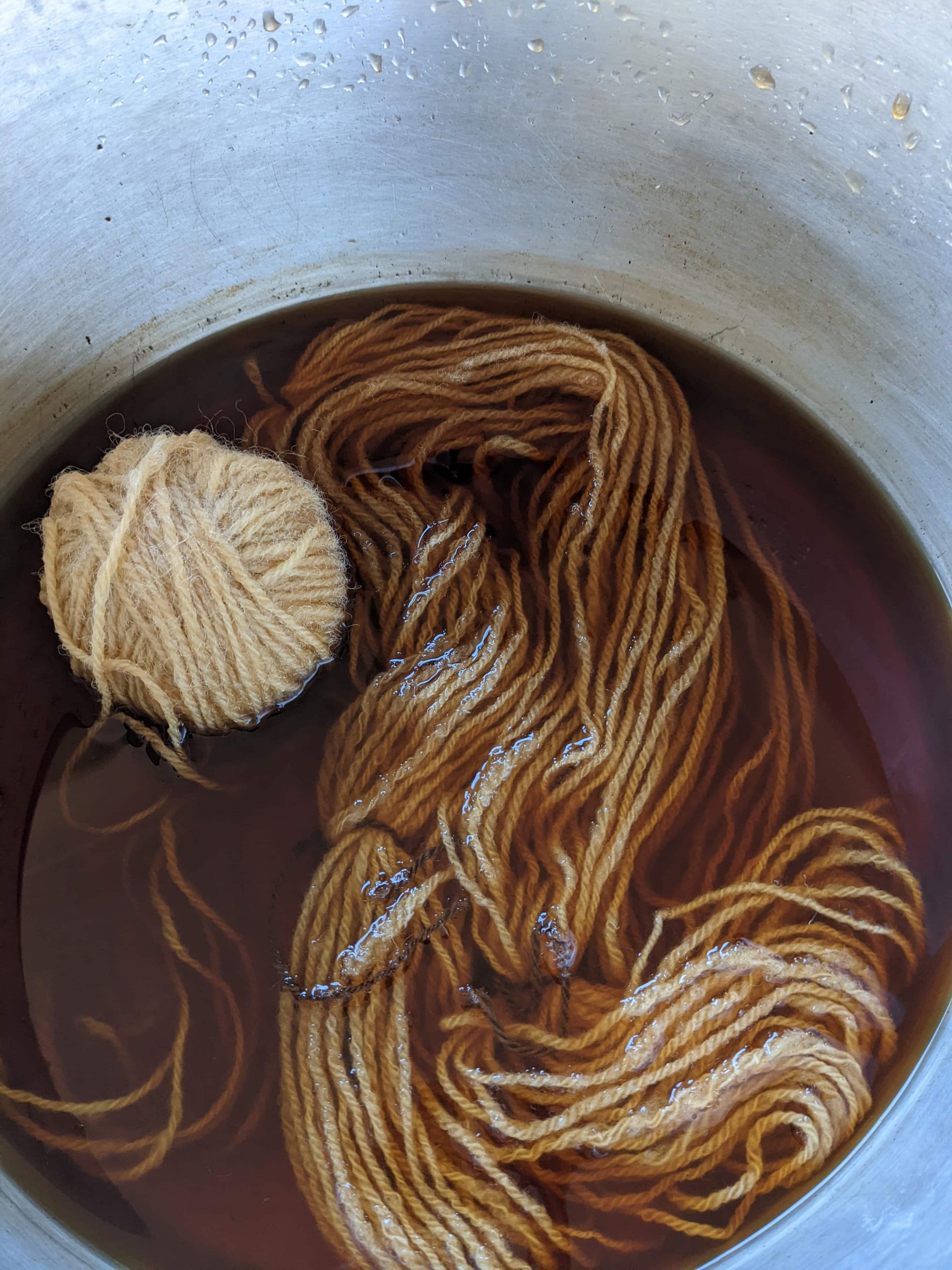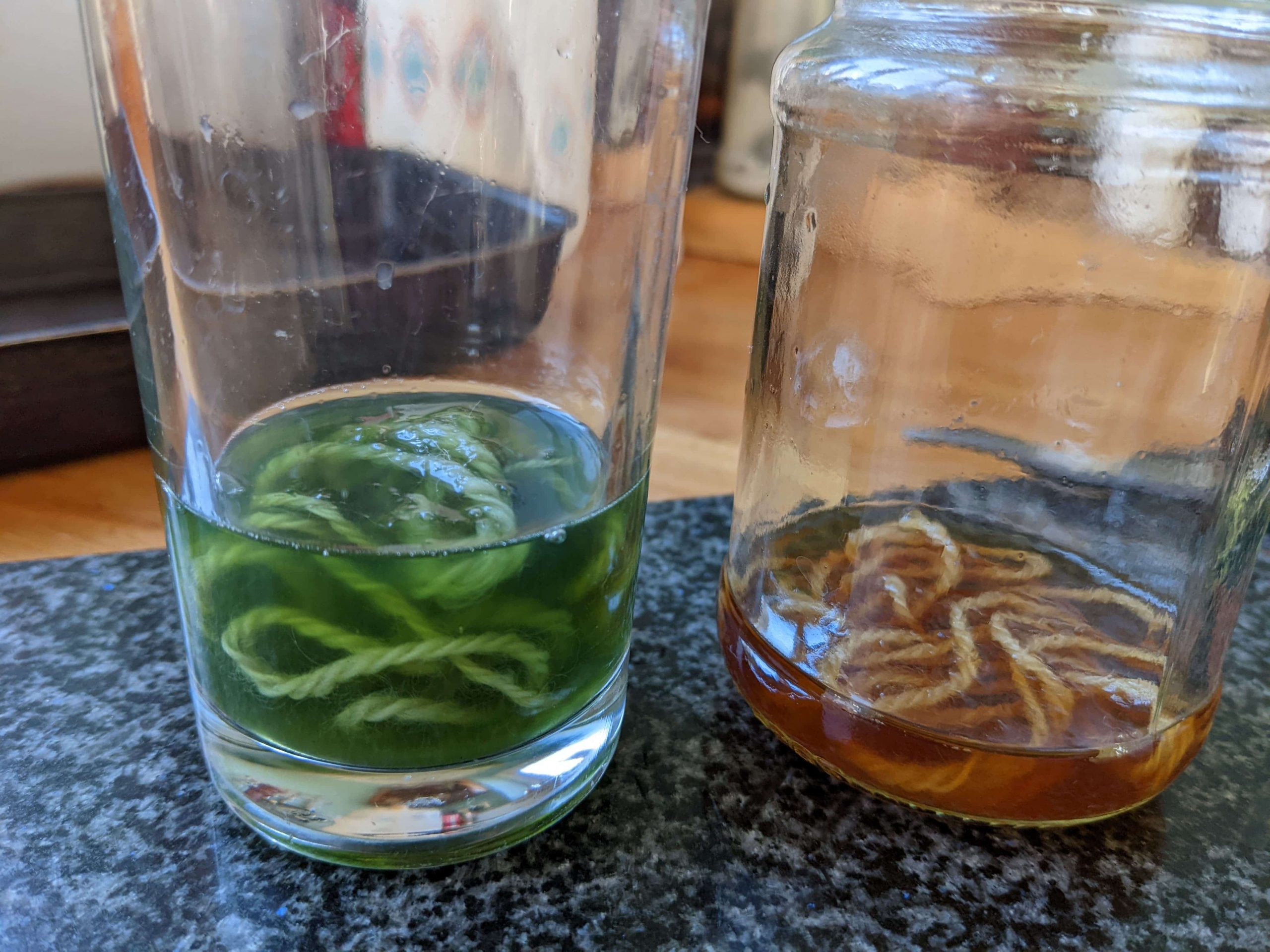The Blushing Bracket Daedaleopsis confragosa. Never one to miss an opportunity…..I happened upon this fungus on a recent visit to a good friend’s private woodland. I was attracted by the colour and had read that some of these polypores can give good dye results. This particular one is quite abundant and grows readily on the decaying willow. It was quite an old specimen and quite tough but I cut it up into smallish chunks and left it to soak in water overnight. The colour was a very promising orange/yellow so I gave the pot a little heat in the hope of squeezing some more colour out. I raised the temperature to a very hot ‘hand hot’, not simmering, then turned off the heat and again left it overnight. I was not disappointed as the colour had intensified.
I had pre-mordanted some wool with alum and cream of tartar which had also been soaking overnight, so in the pot it went, and again I left it overnight. (I’m getting good at this waiting game! You can’t rush natural dyeing). The colour took longer than I thought to penetrate the wool so I gave it a little heat, and yes, again left it overnight……..
The colour looked a fairly disappointing dull brown. I pulled it out, rinsed it and set it to dry. There was still a lot of colour left in the water so I put the fungus back in, turned up the heat ( I had nothing to lose) and let it simmer a while before adding more wool. You can see from the photo that the first skein, when dry, turned a lovely orangy/brown which I rather like. The other two skeins are a little lighter in colour and not quite as nice but they tone nicely. Definitely would try this again. I modified a couple of samples. One with copper and one by raising the Ph with soda ash. The copper turned a lovely green but the raised Ph sample didn’t do much at all. So if I wasn’t happy with the pale orangey colour I could always turn it green……..but, I’ll stick with the pale orange.






